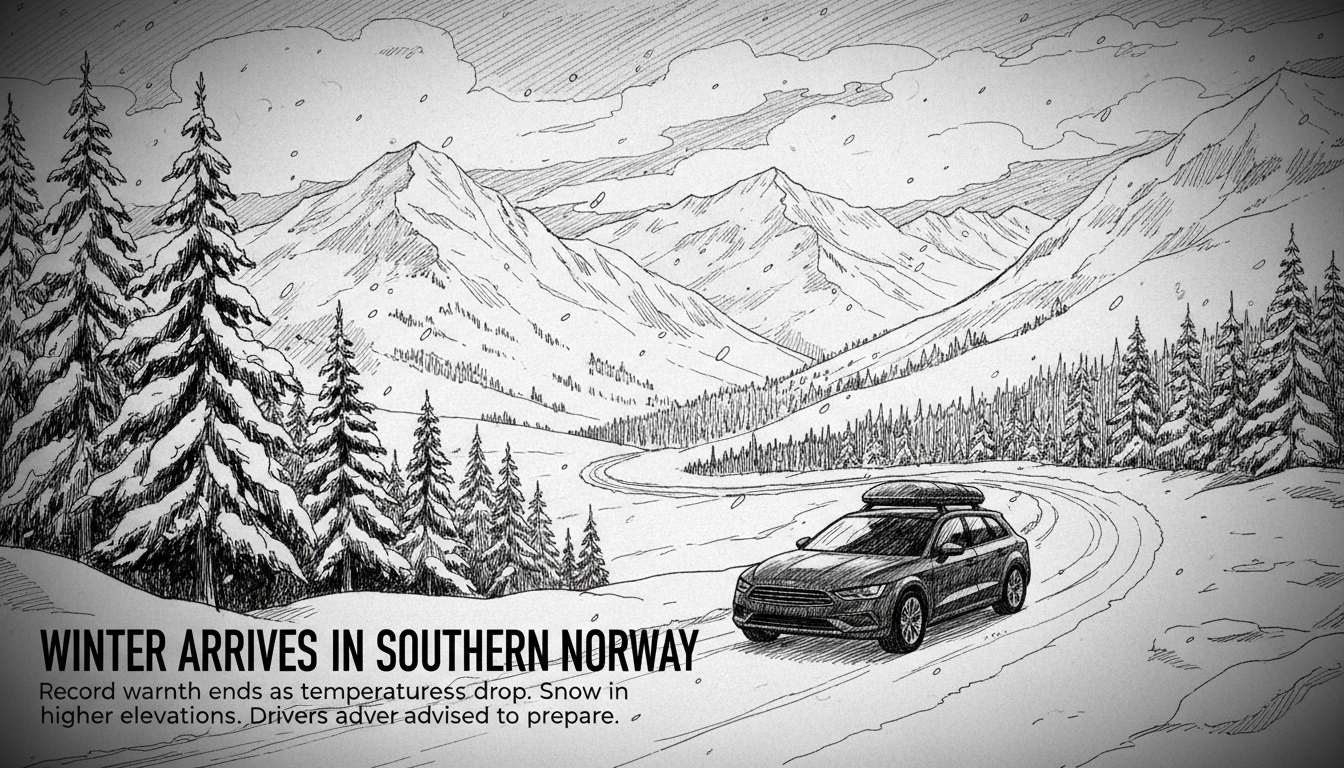Southern Norway prepares for a dramatic weather shift after experiencing record warmth throughout November. Temperatures have measured five degrees above seasonal averages, but meteorologists confirm colder conditions will dominate the coming weeks.
The change begins Thursday when northern air flows southward across the country. A meteorologist stated this marks the definitive arrival of winter conditions in southern regions. The shift brings gray skies, precipitation, and significantly lower temperatures.
Snow appears likely in higher elevations across southern Norway. The meteorologist noted people should expect varying precipitation types, with snow accumulating at moderate altitudes. Daily rainfall could reach 10 millimeters in many areas, with localized amounts between 60-80 millimeters possible according to forecast models.
Northern Norway already experiences full winter conditions. Icy roads created hazardous driving conditions on the E6 highway Monday, resulting in multiple vehicles sliding off the roadway. Svalbard may see temperatures plunge to -20 degrees Celsius.
This weather pattern represents a return to typical late autumn conditions after an unusually warm period. Southern Norwegian cities including Oslo, Kristiansand, and Bergen recorded unprecedented November warmth. Bergen's average temperature reached 11.4 degrees, approaching record levels for the month.
The meteorologist explained the previous warmth resulted from southerly winds bringing mild air northward. Now shifting wind patterns from the north introduce characteristic cold air masses.
Despite the changing conditions, officials haven't issued severe weather warnings. They describe the incoming weather as typical for the season rather than dramatic. The meteorologist advised drivers to exercise caution and ensure winter tires are installed, noting travel times may increase during precipitation events.
Eastern regions including the Oslo area may enjoy sunshine despite the cooling trend. The meteorologist indicated eastern areas remain sheltered by mountains while western and central Norway receive most precipitation.
The weather shift affects all transportation and daily activities. Road maintenance crews prepare for potential snow removal operations. Residents should anticipate typical Norwegian late autumn weather with variable conditions across different regions.
This temperature reversal follows global patterns of increased weather variability. The rapid transition from record warmth to seasonal cold demonstrates Norway's dynamic climate systems. Such shifts require adaptable infrastructure and public preparedness throughout the Nordic region.

